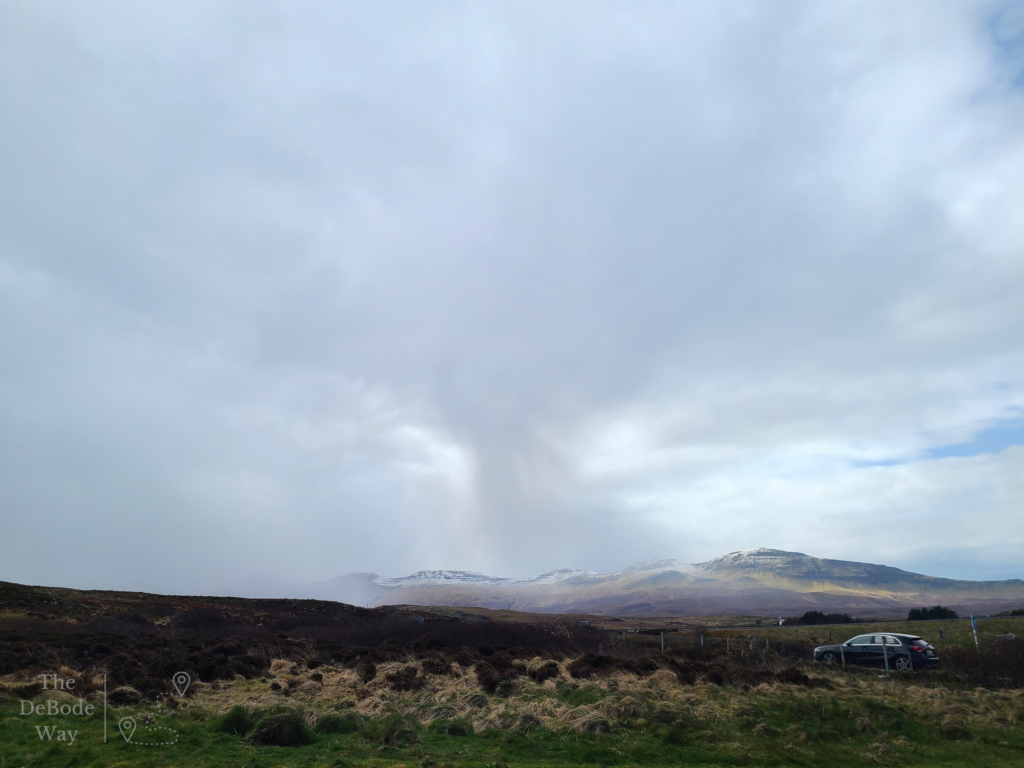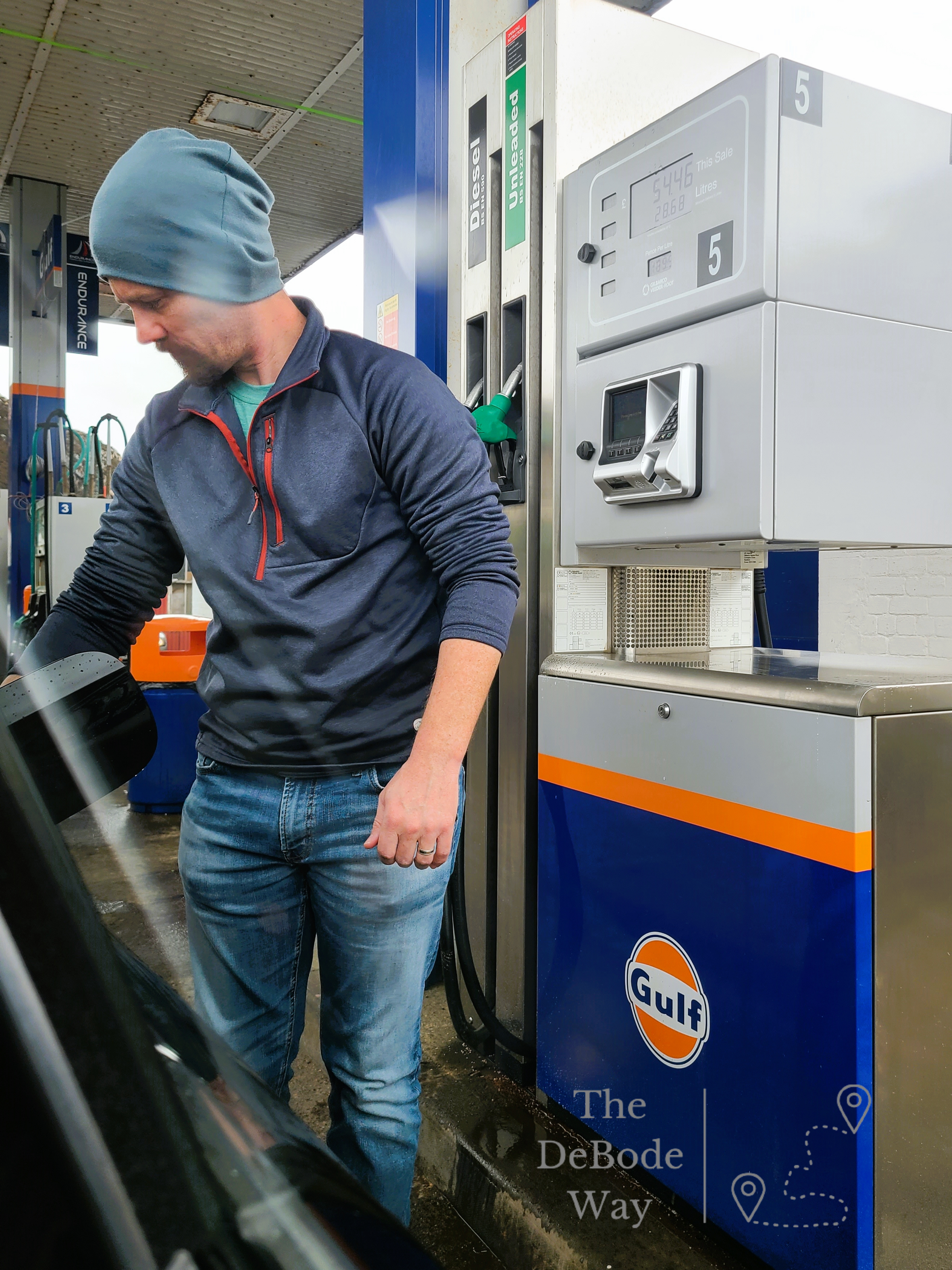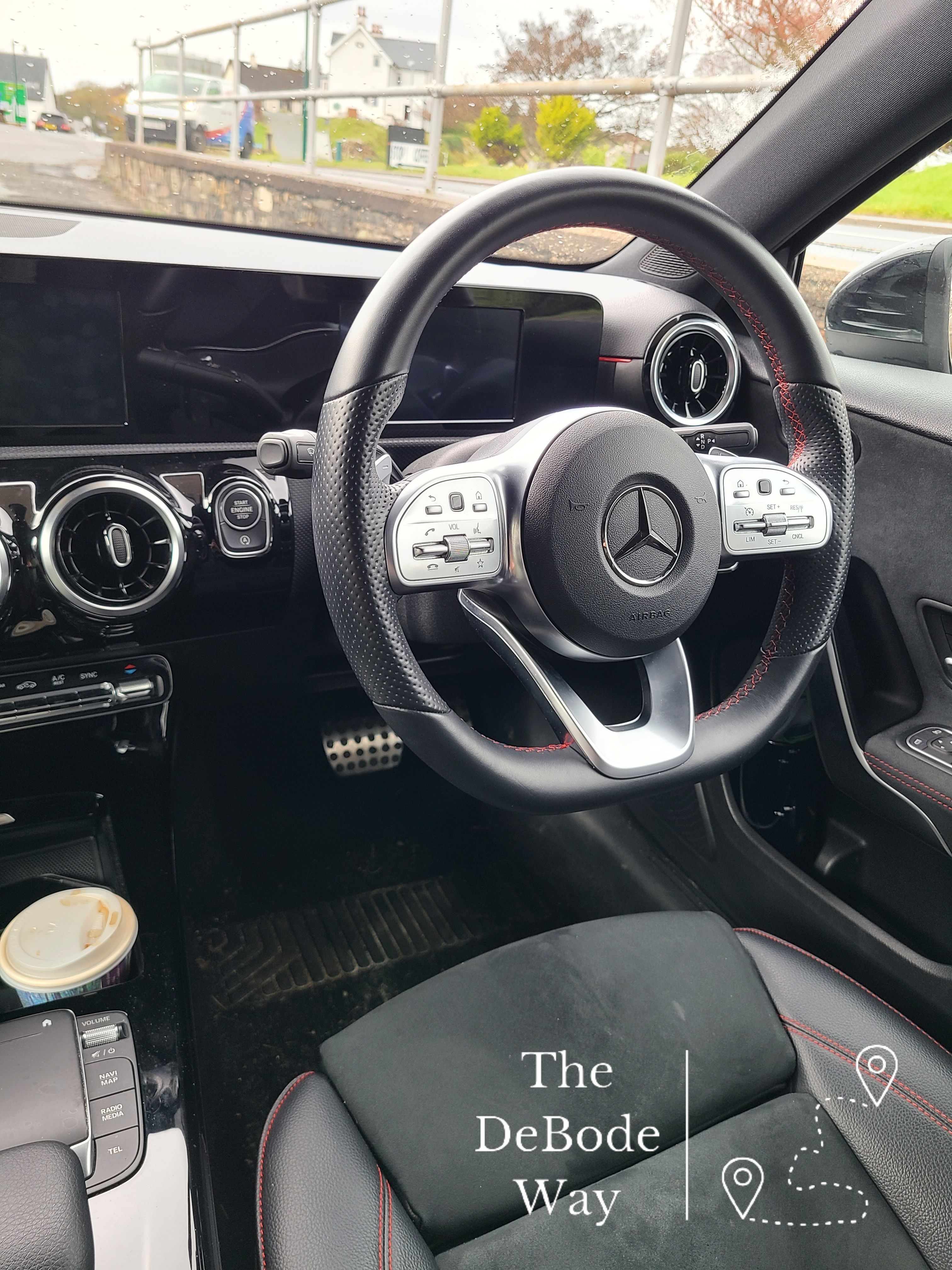As we’ve said in earlier posts, our preferred way to travel is hopping a flight across the pond (either of them) to wherever and, after landing and collecting ourselves, renting a car and going our own way. There are tons of benefits to travelling this way, but to be sure, it isn’t for everyone. In fact, one of the more common questions we get is about driving in other countries. So, let’s talk about that now.

Before you Go.
Before you leave home, make sure you do some looking around when renting a car. We usually look at all the major companies to see who has better rates. Also, don’t necessarily jump to rent a car at the airport terminal. Yes, it’s super convenient, but often you’ll pay for that convenience. Instead, see if there are other rental locations in the city your airport is in and what their rates are. More than a few times we’ve found the rates to be a bit lower when you rent outside the airport, even after accounting for the cab ride or train ticket it’ll take to get you there. In Europe, at least, there are some low-cost rental car companies. I’m sure they’re just fine, but I stick to the brands I know and trust. Sometimes that means the rental fees are a little higher than with the low-cost options, but for me, at least, the peace of mind is worth it.
Also, check with your credit card company to see if they have rental car insurance. The only way it’s helpful is if you book the entire rental on that credit card, but once you do, that insurance can come in handy. Sometimes it’s primary insurance, meaning if something happens you’ll submit the claim to them first, and the balance to your regular insurance company. Sometimes it’s secondary insurance, meaning they’ll cover (at least a part) of anything your primary insurance company won’t. Also make sure you’re clear on the kinds of cars your rental insurances (from your credit card and/or insurance company) will cover. For example, on a recent trip to Scotland we rented a Mercedes (to clarify, we rented a small car, it ended up being a Mercedes). That’s all fine and well, but when we called the credit card company to see if they’d cover it with their rental insurance coverage, they told us they did cover Mercedes but not the particular class of car we had. Because that was the only available car, that meant we had to shell out £300 for the car company’s insurance. Not a great way to start our journey, but better to know then than after something happened.
Things to Keep in Mind
So, once you have your car and insurance sorted out, then comes the fun part: driving. But first, there’s a few things to keep in mind.
First, unlike the US where most cars are automatic, most cars in Europe – and rental cars are included in this – are manual transmissions. Not comfortable driving a stick? No worries, just make sure you reserve an automatic when renting your car. In our experience, the car companies are clear about which cars are automatics (if it doesn’t say so, assume it’s a manual). They do cost a little more to rent, but as we’ve said before, it’s important to be comfortable during your travels, and the middle of a European city, during morning rush hour traffic, after not sleeping for a day or more is not the place to learn or remember how to drive a stick.
Second, depending on where you go, yes, the driving controls will likely be on the other side of the car (please don’t call it the ‘wrong’ side). That’s a great way to throw you out of sorts when you jump in and turn the car on. Jason is the one who drives when we’re abroad and it’ll usually take him a day or so to get re-accustomed to the different layout. All the more reason to opt for the automatic transmission; even if you are comfortable with a stick, you’ll be shifting gears with your left hand, not your right. 😊
Third, also depending on where you go, you will most likely be driving on the left side of the road, rather than the right side as we do in the US. More than anything, this feels the most unnatural for an American driver, as driving on the left side of the road back home can go very wrong, very quickly. On our most recent trip to Scotland, our cab driver gave us some helpful advice: ‘always keep your passenger on the curb [rather than the center of the road] and you’ll be fine’. Helpful information, indeed.
Fourth, the units of measure can change depending on which country/countries you’re visiting. For example: when we travelled to Ireland a few years ago, everything is in metric, meaning distance isn’t measured in miles, but rather kilometers. Similarly, speed is measured in kilometers per hour (km/h) rather than miles per hour (mph). That’s fine because the speedometer in your car is also in km/h. However, when you travel North into Northern Ireland (remember, Ireland is part of the European Union while Northern Ireland is part of the United Kingdom), the unit of measure changes to miles everywhere…except on your speedometer. Neat, right? Rather than run through the mental math of converting km/h to mph, pull into the first petrol station and scroll through your car’s settings. Odds are good that somewhere you can change your car’s measurement units to match what’s on the road, making things much easier and faster to evaluate (as a side note, most cars we’ve rented in Europe don’t have both km/h and mph on the speedometer, like the cards back in the States). Just make sure you do this again if you go back across the border again.
Fifth, most cars in Europe run on diesel fuel, not regular unleaded gasoline as is the case back across the pond. That’s a pretty important thing to keep in mind when stopping at the petrol station to fill up along the way: always make sure you use the correct fuel type. On the plus side, diesel engines tend to get better mileage (or…kilometerage), so you don’t have to stop for gas as often as you otherwise might. For example, that Mercedes we mentioned earlier? It averaged more than 50 mpg, and even approached 70 mpg at times. Nice.


Sixth, weirdly, almost all the cars we see throughout Europe are newer models. We’re not really sure what to make of this (emissions requirements maybe?), but that’s helpful because when it comes to rental cars, most will have built-in GPS. Don’t expect to rely on your phone’s GPS apps (like Google Maps) wherever you go, as service can be spotty in some areas and altogether nonexistent in other areas. So, having the unit in the car can be really helpful. You can request one of these when you make your reservation if you want; we don’t because there’s usually an extra fee. Also, we reserve automatic cars. It seems like most times when we get to the rental counter, they upgrade our car to give us the automatic we paid for, as they don’t keep many on-hand (free upgrades for the win!). Those upgrades have always included a GPS unit, meaning we don’t have to pay for the GPS functionality. Maybe we shouldn’t always count on that happening, but it’s worked out okay so far. There’s always the paper map adventure option when Google Maps can’t hack it.
Overall
Taken together, this can be a lot, especially if you don’t sleep on planes (like Jason), meaning you’re thinking about all of the above even though you haven’t slept in 24-48 hours (though you can always wait a day, and get some rest before renting). It’s true, there’s a lot to keep in mind when renting a car in Europe (and elsewhere). Even the road signs look a bit different and take a little research to figure out. Still, we think it’s worth it. Agree? Then make your reservation and get ready for a create-your-own-adventure kind of experience you’ll never forget!
Not convinced? No worries; perhaps another mode of transport is more up your alley. And don’t worry, there are plenty of them. Remember, the goal for your travels is to enjoy yourself, not force yourself into uncomfortable and potentially dangerous scenarios.
Happy travels!




